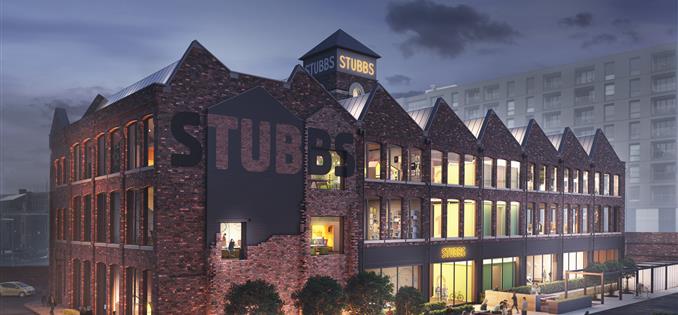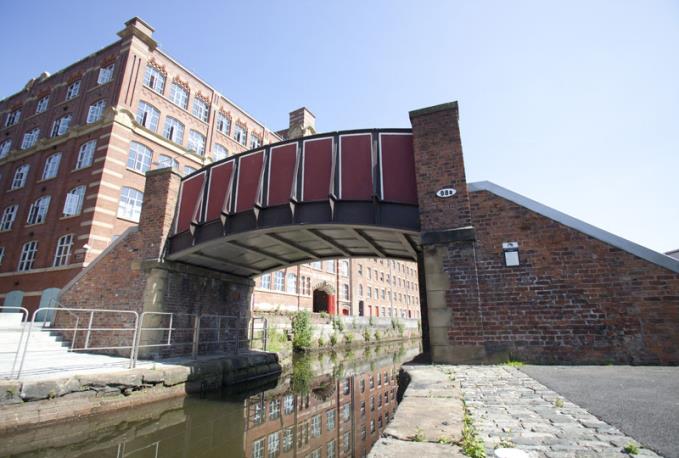THIS week sees the Manchester Architect Awards hosted by Urban Splash at Stubbs Mill in New Islington. Stubbs Mill was once an engineering works making machinery for the cotton mills that dominate this part of Ancoats. None of these, as with Stubbs, are doing what they were built to do. Their original function now seems illusory, their metamorphosis complete.
If it’s trite but true to say the only constant is change then it is curious and amusing how frequently those changes echo one another
This is what happens in all cities but in Manchester it’s perhaps happened more than in most. From small town to the definition of the industrial metropolis through decline and reinvention, the city transforms completely every fifty years. Sometimes it doesn’t even take that long.
Manchester in the teens of the twenty-first century is nothing like the city of the 1990s. The town in the teens of the nineteenth century was utterly different from the city of the 1840s.
John Bright, one of the great British politicians and orators, knew all about the slippery nature of time. Speaking in Manchester Town Hall at the opening banquet on Thursday 13 September, 1877, he recalled a visit to Scotland in the 1840s.
“(As we walked amongst) the ruins of Tantallon Castle, my friend said, with a look of sadness, “How long will it be before our great warehouses and factories are as complete a ruin as this castle?”
“I have thought of that scores of times since. We must bear in mind that great cities have fallen before Manchester (was) known; that there have been great cities, great mercantile cities, on the shores of the Mediterranean – Phoenecia(sic), Carthage, Genoa, Venice – that have slipped.
“Therefore when we are met tonight in this magnificent hall, enjoying the generous hospitality of the Mayor and his friends, surrounded by this vast industrial and powerful district, let us not for a moment imagine that we stand upon a foundation absolutely sure and absolutely unmovable, and that we are not liable to the dangers which have overthrown and overwhelmed the great municipalities and cities and industries of other countries and of other times.”
If the spirit of John Bright were to return he would rub his eyes in astonishment.
 CGI of plans for Stubbs Mills
CGI of plans for Stubbs MillsIn many ways his fears have come to pass. ‘Great warehouses and factories’ lie in ruins across the Greater Manchester conurbation, in his home town of Rochdale, in the city and across the region. Manchester has slipped in its international standing since the 1870s in terms of global influence.
But he would be even more astonished at how so many of the ‘great warehouses and factories’ in the city centre, in particular, have softened, turned domestic and been converted into apartments, or shifted focus and become hotels, restaurants, bars, clubs and other businesses. Would it perhaps have amused him to spend the night in a luxury hotel room of a warehouse or factory he once knew and recalled seeing a workforce dancing to the rhythm of belt-driven steam engines?
Given his teetotalism, perhaps not all of these newer activities would have pleased Bright and he would, of course, shudder at the region’s decline in manufacturing. Yet, perhaps, he might not be too unhappy to see above him smokeless skies and the rivers coming back to life, and how much brighter and more appealing the city centre has become; how it is now much more than a place to simply do business.
Bright in his speech seems to have had enough foresight to understand that a city never stops. One of our recent articles looks at how Manchester’s skyline has fluctuated over the centuries. It reveals how recent plans will transform the skyline more thoroughly than at any time since the first blast of industry threw up countless chimneys almost two hundred years ago.
That violent upheaval in society and environment caused people with money to flee the centre, now the clock has turned back as thousands return. If it’s trite but true to say the only constant is change then it is curious and amusing how frequently those changes echo one another. Frequent visitor to Manchester, Karl Marx, once wrote how ‘History repeats itself first as tragedy and then as farce.’
Perhaps there is something farcical about people living in former spinning mills, but the continuity of old buildings being given new uses down the decades is comforting too. Cities are organisms, they grow, they contract, they grow again, they develop in unpredictable ways and develop their own personalities but what they never do is stand still.
 Royal Mills luxury apartments in Ancoats
Royal Mills luxury apartments in AncoatsAs Manchester Confidential has catalogued, past, present and future merge. The buildings and schemes we have written about that were dreamt up but never completed dissolve into the buildings and schemes that have disappeared and some that may yet be completed and thus become physical reality. Their time will come to disappear or change character.
The buildings we see today sit on the bones of the ones that came before, ghost buildings, within a space which contains the shape of another building constructed in the architect’s minds-eye but which was never built because it failed the architectural competition or simply ran out of money.
Cities are both beasts of illusion and change, wonderfully impermanent.
No matter what we think of his politics, Marx also wrote, possibly in Manchester, that ‘Nothing human is alien to me’. More than any other human construct cities resemble the mercurial nature of our own human condition. They echo our best hopes and our worst fears, our sometimes ridiculous aspirations and our often equally ridiculous lack of ambition. They are worth endless study because they are us. Because we made them. They change us as we change them.
Jonathan Schofield’s new book Illusion & Change is published on 26 July.
You can find out more about the Manchester Architects Awards here.















